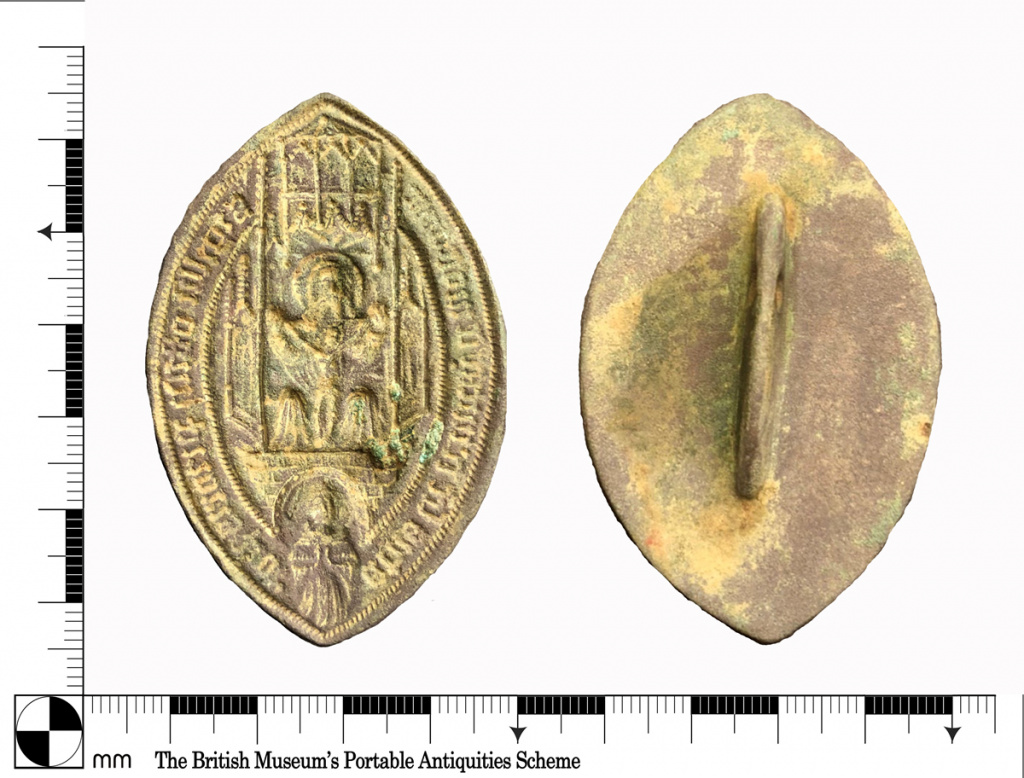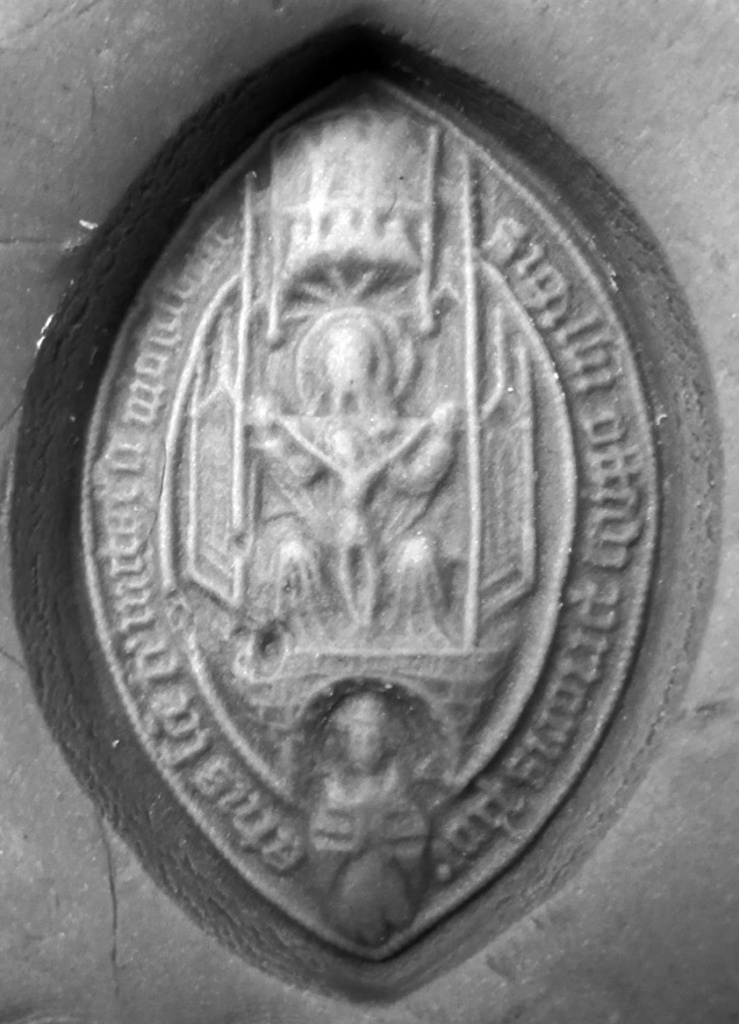PAS Finds: week ended 20 August 2021
PAS Finds: week ended 20 August 2021
A round-up of some of the finds recorded at the PAS for the week ended 20 August. There were 370 finds recorded in this week. Although the number of finds was above average, there were relatively few finds of any quality or rarity. There was only one Find of Note and no Treasure finds
Featured Find
Seal Matrix of the Priory at Mottisfont
A Medieval cast copper alloy seal matrix attributed to the Priory at Mottisfont, Hampshire. It has been designated a Find of Note: County / local importance
The die depicts the Trinity and a figure of a praying cleric, likely representing the Prior or Abbot. Absent from the composition is any clear representation of the Holy Spirit, normally represented in such iconography in the form of a dove.
The legend, in black letter, reads sigillu officii prioris (p’or – etas?) Cce trinitat’ de moteCfont or “seal of the […] prior of (the priory) of the Holy Trinity of Mottisfont“. The black letter style of the legend on this matrix dates this object to the latter part of the history of the priory, circa 15th to early 16th century
.
Priory of Mottisfont
In 1201 William Briwere, a businessman, administrator and courtier to four Plantagenet kings, founded the Priory of the Holy Trinity at Mottisfont in Hampshire. It was supposed ti hold the forefinger of St John the Baptist as a sacred relic, and eager pilgrims came to be blessed by the Augustinian canons. Hundreds of prosperous years were followed by devastation from the Black Death and other disasters. During the Dissolution of the Monasteries under King Henry VIII, the priory was dissolved and the king gave Mottisfont to a favoured statesman, Sir William Sandys





